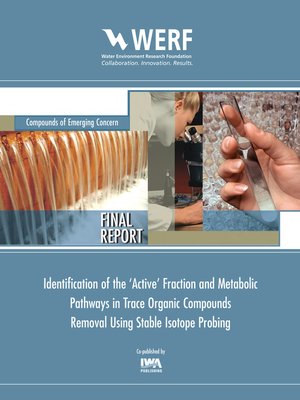Identification of the 'Active' Fraction and Metabolic Pathways in Trace Organic Contaminants Removal Using Stable Isotope Probing
ebook ∣ WERF Research Report Series, Book U2R12 · WERF Research Report
By Kartik Chandran

Sign up to save your library
With an OverDrive account, you can save your favorite libraries for at-a-glance information about availability. Find out more about OverDrive accounts.
Find this title in Libby, the library reading app by OverDrive.



Search for a digital library with this title
Title found at these libraries:
| Library Name | Distance |
|---|---|
| Loading... |
The widespread presence of trace organic contaminants (TOrC), such as the endocrine disrupting compound bisphenol-A (BPA), has been cause for growing concern due to persistence in the environment and potential ecological impacts. Despite progress made in understanding the removal of TOrC in biological wastewater treatment processes, there is still a lack of consensus regarding the identity of microorganisms active in biodegradation and the exact removal mechanisms involved. This research aimed to develop a clear understanding of the microbial 'active' fraction in activated sludge which is responsible for the assimilation of a selected TOrC, BPA. Through the use of DNA stable isotope probing (DNA-SIP), BPA assimilating organisms were identified. This active fraction of BPA assimilation included bacteria related to Sphingobium spp., Sphingomonas spp., Pussilimonas spp., and Variovorax spp.. Results from this work also confirm that prior or time-course exposure to BPA as well as bioreactor process conditions influence microbial community structure and function. Added understanding of TOrC removal mechanisms could be derived through continued investigation into microbial functions associated with BPA removal.







